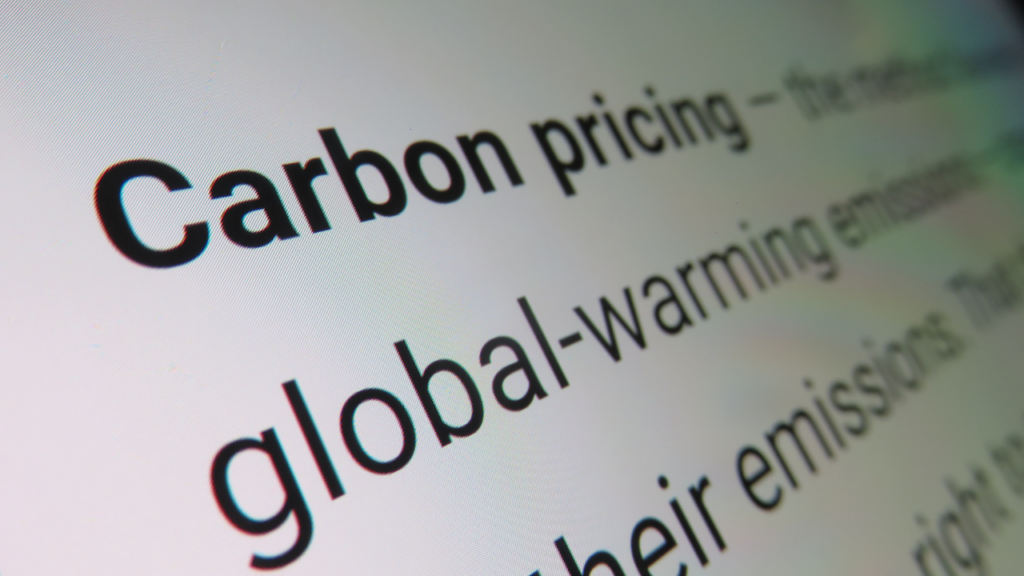
Practical but insufficient in itself!
Being a sales person, I understand the power of incentives and penalties very well. They drive you to work harder / smarter and generate. While these are designed to serve as a good carrot and stick mechanism, they are not enough to ensure that our targets are always met and that we always deliver on time. There are factors like demand, supply, industry standards, competition, externalities like tax, pandemic etc. Similarly, carbon pricing is a good mechanism to enable intent but it may not be sufficient in itself if factors like these are not taken into account or planned for.
Carbon taxes or ETS add to the MPC and therefore encourage producers to produce less or emit less while producing the same quantity at least. Theoretically, this should work and even empirically it seems to have worked but more significantly at sectoral level and not at aggregate levels yet. There are other factors that need to be planned for.
Let us look at two examples –
South Korea:
Statistics suggest that Korea’s export and import activities are likely to be a crucial driver of its CO2 emissions and therefore reducing CO2 emissions is significant challenge considering the growing exports.
They have implemented ETS since 2015. Charts suggest that CO2 emissions increased from 2015 to 2018 before dropping below 2015 levels in 2020 and went back to 2019 levels in 2021. There has not been a significant and consistent movement in the aggregate level and therefore let us look at sectoral level movements and probable causes. In 2019, the distribution of CO2 emissions stood as follows –
- Electricity and heat ~ 60%
- Transportation ~ 17%
- Industry ~ 13%
- Manufacturing and construction ~ 10.8%
Let us further analyze the sectoral trends. Obviously even a 3-4% change in electricity and heat effects larger change in the aggregate CO2 emissions. From 2018-2019 this drop was observed and it corelates with the drop in aggregate as well but not in the same proportions always as there are some interdependencies within sectors. Interestingly, manufacturing and construction sector have seen significant reduction in absolute numbers as well as percentage since 2001 when there was no ETS policy. The reductions have continued at the same rate, possibly slightly accelerated post 2015.
Clearly, there is some linkage in the carbon pricing and observed small / large reductions. However, it is not the only enabler. Changes in industrial structure owing to trade, liberalization or localization have played a significant role. From being a textiles intensive manufacturing economy, South Korea has become a more electronics, transport equipment, machinery oriented one. Industry level interventions, closures, demand, trade play a significant role when we look at emissions data, corresponding policies and economic scenarios.
British Columbia, Canada:
Am drawing heavily from this study – https://link.springer.com/article/10.1007/s10640-022-00679-w
The first major carbon tax in North America: the carbon tax in British Columbia (BC), Canada was introduced in 2008. “The tax has been widely hailed as a success—both in popular perception as well as in its impact on consumer demand for fossil fuels, natural gas, and lack of impact on economic output.”
The study reveals that carbon taxes have resulted in a significant reduction in transportation CO2 emissions but not at an aggregate level. The report also highlights the heterogeneity in emission elasticities across sectors as well as the importance of command-and-control policy interventions beyond carbon pricing. Similar results were seen in Sweden as well where the policy was focused on transportation.
Let us examine this a bit.
- Hybrid vehicles, EVs have a low running cost as compared to diesel and petrol cars. The initial cost of such vehicles is higher but that is becoming more competitive and customers are looking at the total cost of ownership as well.
- With an additional carbon tax on fossil fuel enabled vehicles, it is logical to opt for low emission / zero emission vehicles.
- Even conventional vehicle manufacturers have to adhere to emission standards and they are becoming more stringent every year. These standards have been around before the carbon pricing era as well and emissions / vehicle has been going down too.
- Additionally, there are recent factors like Covid, work from home, video conferencing etc. Carbon pricing seems to have accelerated the process.
- Countries like India, where the carbon tax is not yet implemented also see a significant rise in EV adoption. 10% of two wheelers are already EV and 66% people show readiness to buy 2W EVs in near future.
But when it comes to other consumption like residential one, the cost to the end user per unit of electricity consumed does change with the source of electricity. There are offsets but at a domestic level they may be insignificant. So we do not see a significant drop in CO2 emissions here. In fact, lowering of transport emissions effects electricity consumption for heat in the opposite direction.
Here we again observe there are factors like consumer demand, industry standards, monitoring and control that play a significant role.
In conclusion, I feel carbon pricing is a practical tool but it is insufficient in itself. There are other enablers like trade, industry standards, technology and costs that need to be used in conjunction. Moreover, for a developing country that is likely to start producing and exporting goods that emit more CO2 in production adhering to global carbon pricing is going to be a big challenge. They might opt out of such pricing mechanisms to stay competitive. It is more useful to have tools such as industry standards apply in these countries.